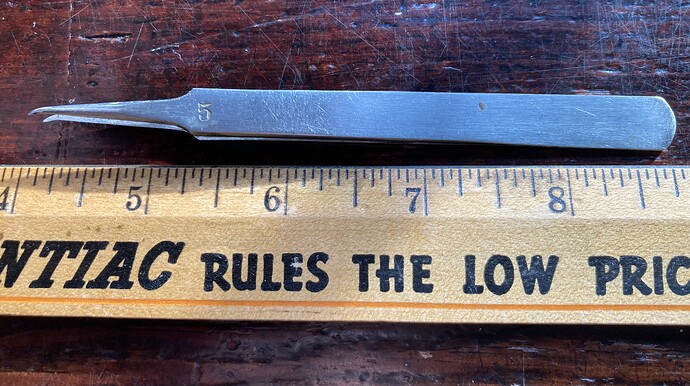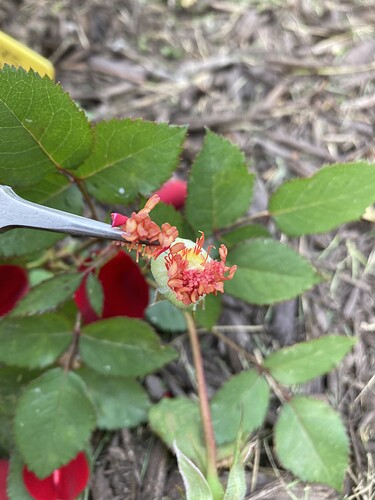I am just starting to try to grow roses from seed, and I’m hoping to really breed roses next. I don’t intend to spend a lot of money, though, so I want to know: what supplies do I really need?
I already have clippers and gloves and stuff - I’ve owned rose bushes for a few years now. I’m planning to buy some seed starting mix next time I grocery shop. I have a few sunny windowsills, and I’m hoping it’s okay to put the seed starting mix in paper cups with holes punched in the bottom. I have a little potting soil and a few empty pots for later.
Is there anything else I need to buy for this?
2 Likes
That depends entirely upon how elaborate and how “scientific” you wish to make it. I am pragmatic and “cheap” so I keep it simple and don’t spend a ton of money doing it. Please feel free to take a look at what I use in my climate here along the Central California Coast. Pushing the Rose Envelope: Pollinating Roses
Two things have changed in the twelve years since I made that blog post. Avery no longer makes my favorite tags and I’ve experienced MANY issues with slugs and snails eating the paper. A friend turned me on to these. They are not biodegradable and nothing eats them. They can be erased and reused and the plastic thread they are on is too long so you either deal with it or shorten them. Amazon.com Feel free to search for other types you may prefer.
Also, the source for the “squeezers” is no longer the best for the product. I have seen many of this tool in many places. They are ALL made from stainless steel and they are ALL made in Pakistan, as if there is one factory producing them, some with specific sources’ logos and many without. The most cost effective source currently is Squeeze-Action 4.75" Straight-Blade Micro-Scissors - RioGrande Buy several pair as you are sure to break or lose the one you own. Multiples guaranty you will NEVER need a second unit. Don’t cut anything thick or tough with them as you will spring them. They are perfect for digging anthers from deep ovaries and cutting stamen off ovaries. You can squeeze them closed and use them to help pry open tight buds, also.
I was fortunate to collect many small glass baby food jars eons ago when my thirty year old nephew was an infant. I’ve only broken one or two, otherwise they last FOREVER. I write the name of the pollen on the jar with Sharpie and soak that off in hot soapy water before putting the jars through the dishwasher at the end of the season.
Cheap and simple enough for you? Enjoy!
3 Likes
Roseseek, thank you so much! I read your article and it was extremely helpful. You mentioned that temperatures above 70 degrees slows germination. In my house the AC keeps things at 77, and it’s been acting up so between that and the cost I’d rather not push the temperature any lower. Central Texas is quite hot. Do you think I should keep the seeds in the refrigerator and wait for fall, or should 77 be good enough?
2 Likes
You’re welcome! Give it a try. I’ve observed germination continuing up to the low eighties but at a slower rate. I preferred waiting until Thanksgiving in my old climate as that was when the temperatures would historically fall into the beneficial zone for germinating seeds and that’s when the rains would traditionally start. I’ve always planted outdoors to keep things simpler and easier. If you can hold your seeds until conditions outdoors are optimal (or AS close as possible) then plant outdoors, I think you will experience far fewer potential issues.
2 Likes
I just use a piece of Scotch Blue masking tape (3/4 or 1” wide), about 6” long, and a Sharpie. I write the father and date, and wrap it around the pedicel, sticking the two ends together. It remains legible through the season, and most importantly, has good visibility so I don’t accidentally deadhead.
I took a pair or stainless
#5 tweezers, and carefully bent the tips to conform to my personal “angle of attack”. The most important thing for me, is that the tweezers have a long clamping area, because I just dig in and tear the anther filaments. I’m not coordinated enough clip them like Kim.
Finally, I use cheap small cosmetic jars, just big enough to hold 1-2 sets of anthers. I don’t mix my pollen, and just freeze them after they dry. They are very light, and come up to temperature quickly out of the freezer, so I don’t worry about condensation (like if I was using baby jars).
All in all, as a hobby, this requires practically no investment in tools and materials.
6 Likes
Hi Dewberry!
I’m just a newbie but here’s my two cents:
I just remove anthers with my fingers. Having a bit of nail length helps. I hold a jar lid underneath with my other hand to catch any fallout. Not knocking the tiny scissors and tweezers recommended by the others here, just saying that good old fingers can do the job fine too!
4 Likes
Hello Dewberry!
I have also been using my fingers for removing anthers since many years and have had the best experiences with this method. It’s quick and easy and doesn’t take much effort.
4 Likes
Lee, I am very jealous of the location you are growing that rose. Wow
1 Like
Thank you! It’s Ohio River bottomland. Until somewhat recently, I wasted a lot of time trying to coax signs of life from an exhausted Indiana clay ex-cornfield. Now I’m on a silt-loam Eden that will grow anything (as long as it doesn’t flood  ).
).
2 Likes



